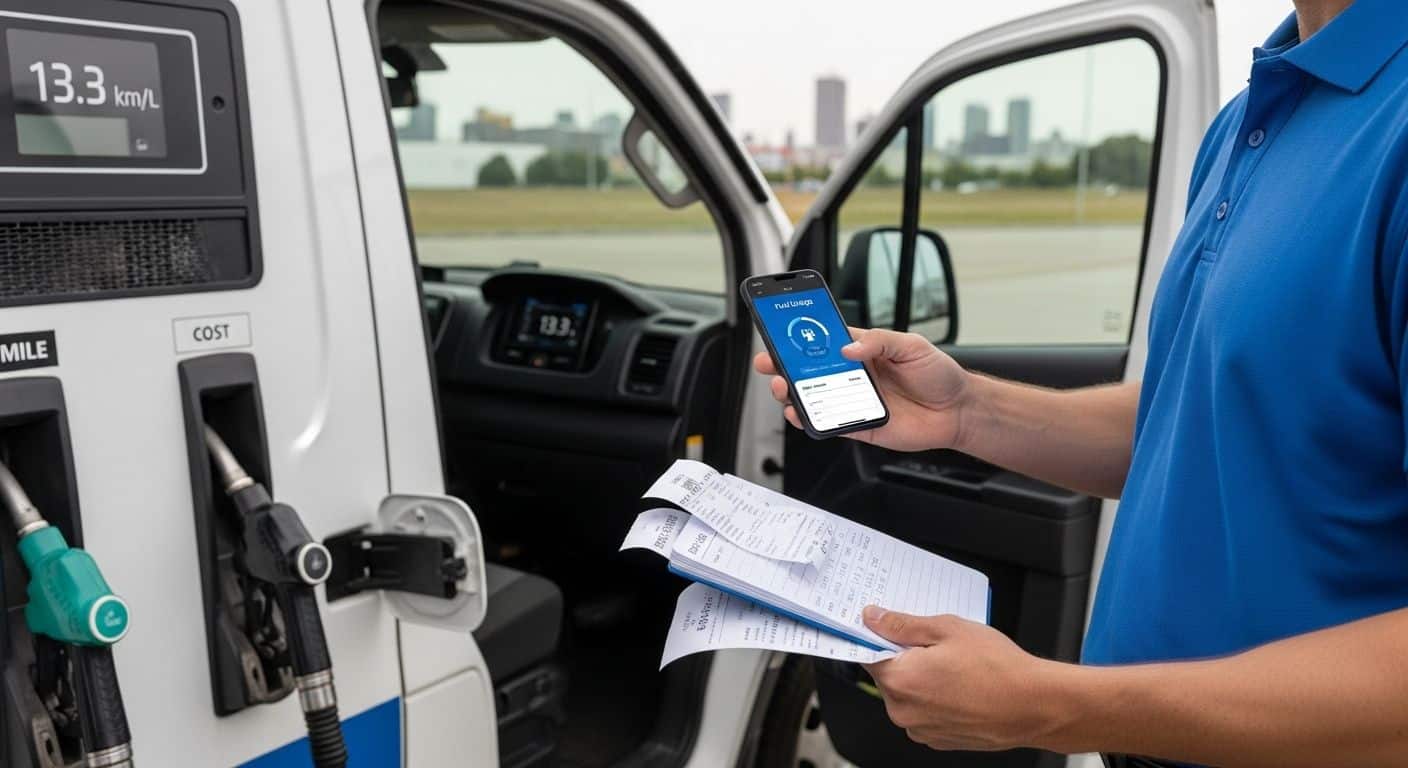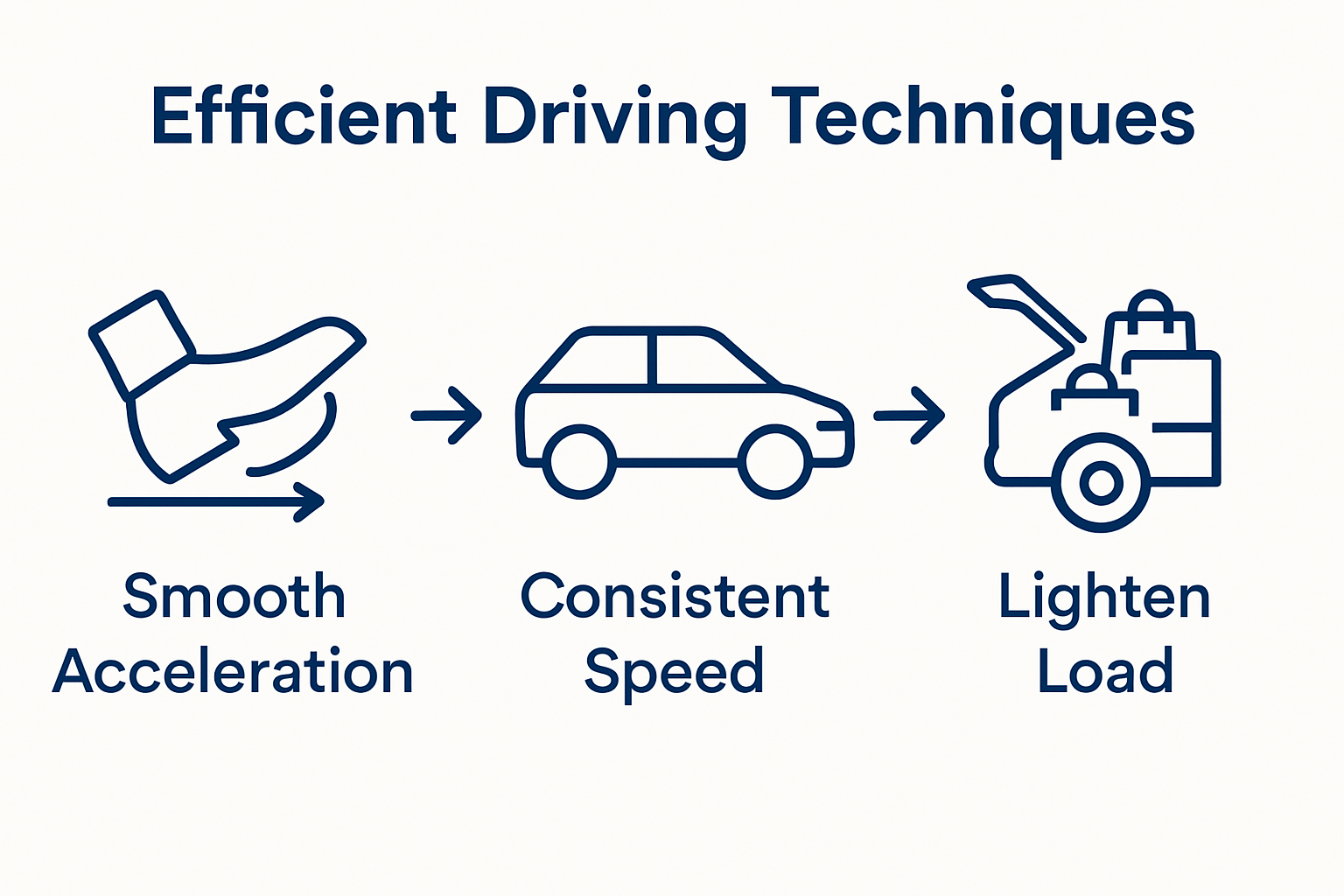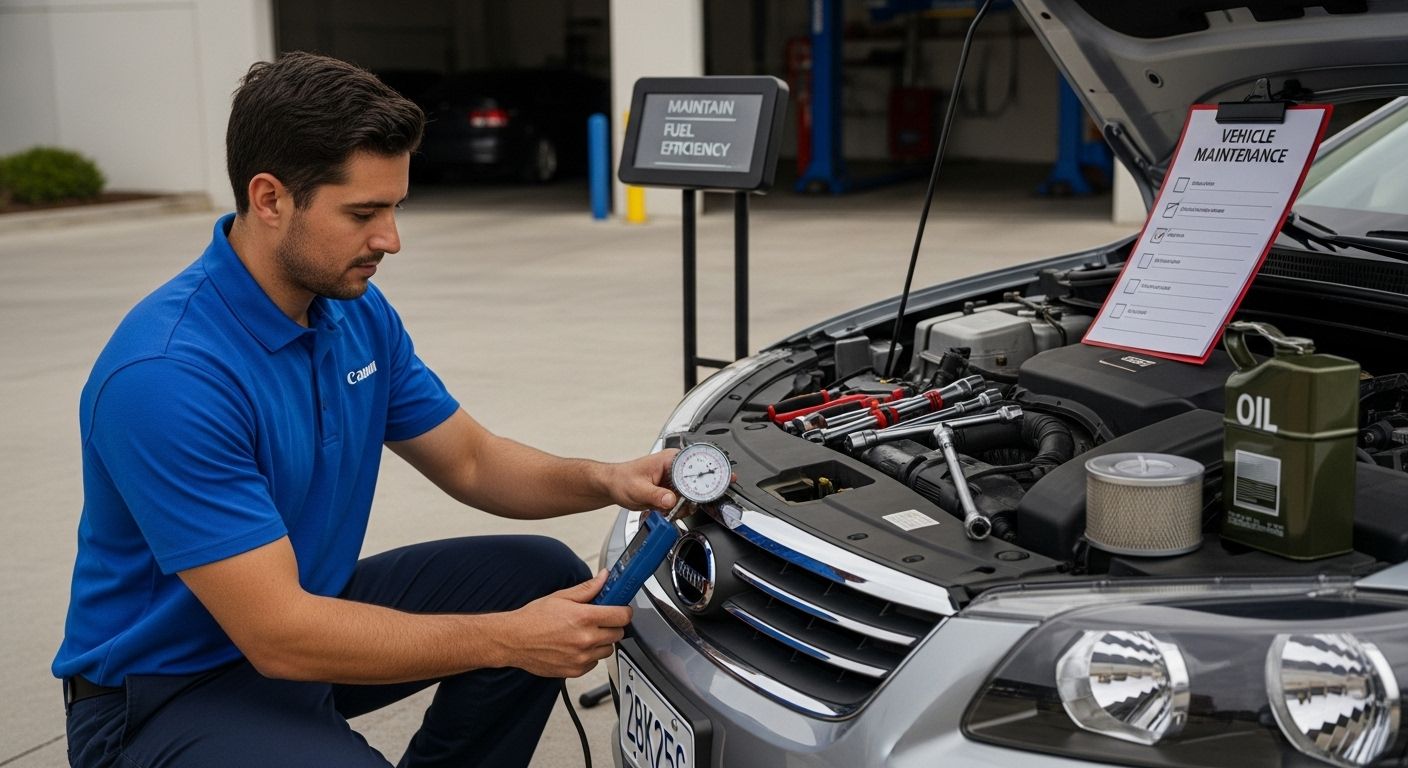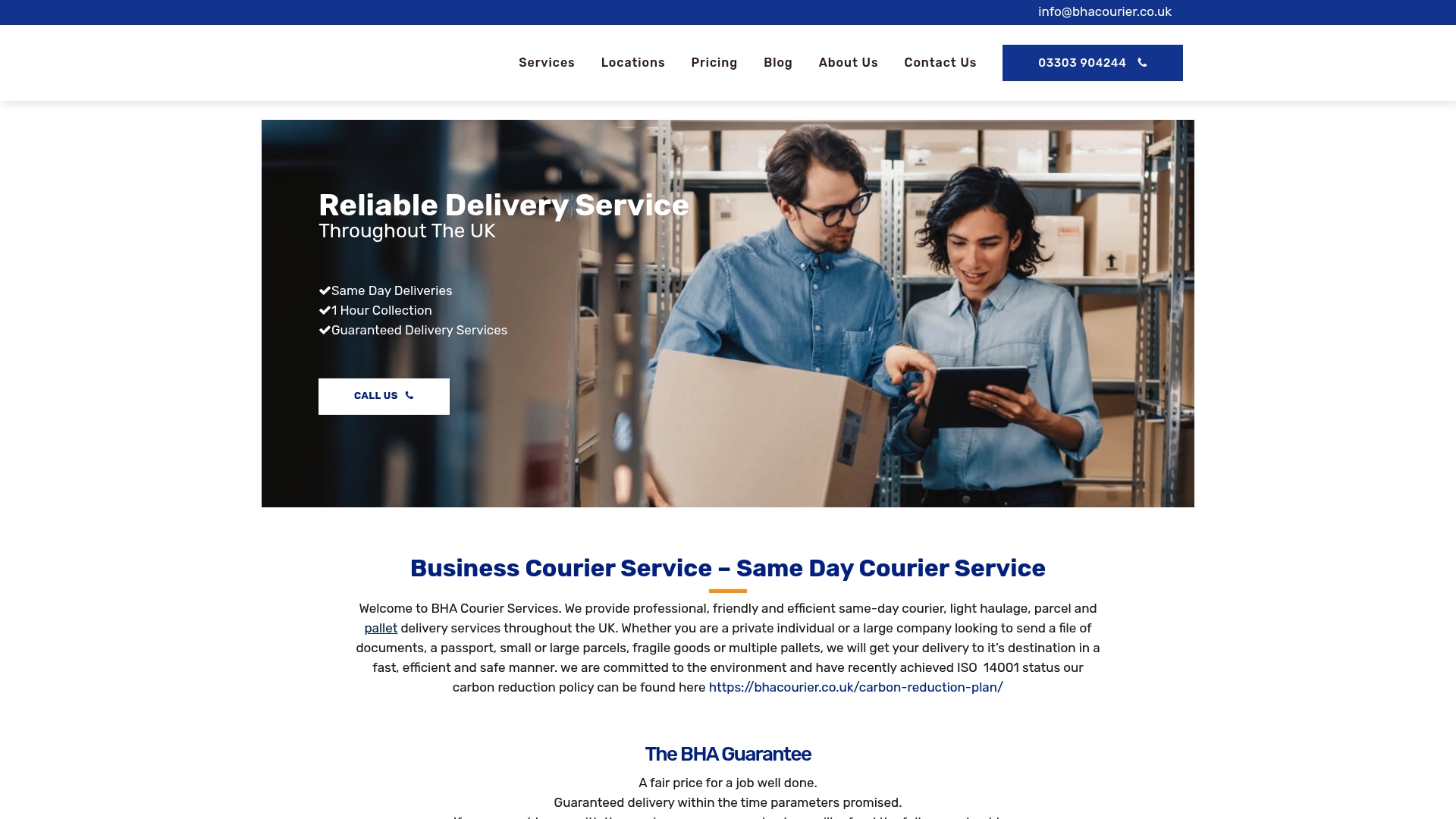
28 Aug How to Reduce Fuel Costs: Practical Strategies for 2025
Many drivers worry about rising petrol prices and endless fuel bills, especially when every mile seems to cost more. Yet despite all the talk of cutting costs, most people miss a huge opportunity hidden right on their dashboard. You can slash your fuel expenses by up to 40 percent just by changing your habits and using a few simple tools. It sounds extreme, but the real surprise is how straightforward these savings can be once you know where to look.
Table of Contents
- Step 1: Assess Your Current Fuel Usage
- Step 2: Implement Efficient Driving Techniques
- Step 3: Regularly Maintain Your Vehicles
- Step 4: Explore Alternative Fuels And Transport Options
- Step 5: Monitor And Analyse Fuel Expenses
Quick Summary
| Key Point | Explanation |
|---|---|
| 1. Track fuel performance data | Keep a detailed log of fuel receipts to establish your vehicle’s fuel consumption metrics and identify savings opportunities. |
| 2. Adopt efficient driving techniques | Practice smooth acceleration and maintain a steady speed to significantly lower fuel consumption without costly modifications. |
| 3. Regular vehicle maintenance is essential | Follow manufacturer guidelines for servicing and check key components like tyres and air filters to maximise fuel efficiency. |
| 4. Explore alternative fuel options | Consider electric or hybrid vehicles and alternative transportation methods like carpooling to reduce overall fuel costs. |
| 5. Monitor and analyse fuel expenses | Use digital tools to track fuel purchases systematically, allowing for analysis that can uncover inefficiencies and help reduce costs. |
Step 1: Assess Your Current Fuel Usage
Understanding your current fuel consumption is the crucial first step in developing an effective strategy to reduce fuel costs. Before implementing any changes, you need a clear baseline of how much fuel you are currently using and where potential savings opportunities exist.
Track Your Vehicle’s Fuel Performance
To begin, gather comprehensive data about your vehicle’s fuel consumption. Start by collecting your fuel receipts from the past three to six months and create a detailed log. Record key information such as the date of purchase, amount of fuel bought, cost per litre, total expenditure, and the kilometres travelled. Modern smartphones offer excellent fuel tracking applications that can automate much of this process, allowing you to input data quickly and generate insightful reports.
Calculating your vehicle’s fuel efficiency is straightforward. Divide the total kilometres driven by the total litres of fuel consumed. This will give you your kilometres per litre (km/L) metric. For example, if you drove 600 kilometres and used 45 litres of fuel, your efficiency would be approximately 13.3 km/L. The UK Energy Saving Trust recommends tracking this metric regularly to understand your vehicle’s performance.
Pay special attention to variations in your fuel consumption. Different driving conditions such as city traffic, motorway journeys, and seasonal temperature changes can significantly impact fuel efficiency. By documenting these nuances, you’ll develop a more comprehensive understanding of your vehicle’s fuel consumption patterns.
Analyse Driving Habits and Vehicle Maintenance
Beyond tracking fuel purchases, examine your driving habits critically. Aggressive acceleration, frequent hard braking, and maintaining high speeds all contribute to increased fuel consumption. Modern vehicles often include onboard computers that can provide real-time fuel efficiency data, which can be an invaluable tool in this assessment.
Additionally, review your vehicle’s maintenance records. Poorly maintained vehicles consume more fuel. Check when you last serviced critical components like air filters, tyres, and engine systems. Properly inflated tyres, clean air filters, and well-tuned engines can improve fuel efficiency by up to 10%.
By the end of this assessment, you should have a clear picture of your current fuel usage, efficiency metrics, and potential areas for improvement. This foundational knowledge will guide your subsequent strategies for reducing fuel costs.
To help you quickly compare the main strategies for reducing fuel costs, the following table summarises each approach, its estimated savings, and typical methods involved.
| Strategy | Estimated Cost Reduction | Main Methods/Techniques |
|---|---|---|
| Track Fuel Usage | Establishes baseline | Logging fuel receipts, using fuel tracking apps |
| Efficient Driving Techniques | Up to 15% | Smooth acceleration, steady speed, cruise control |
| Regular Vehicle Maintenance | Up to 15% | Tyre inflation, air filter changes, oil changes |
| Alternative Fuels/Transport Options | Up to 40% | Electric/Hybrid vehicles, carpooling, route planning |
| Monitor and Analyse Fuel Expenses | Up to 20% | Digital tracking tools, expense analysis, performance metrics |
Step 2: Implement Efficient Driving Techniques
Efficient driving techniques are your most immediate and impactful strategy for reducing fuel costs. By transforming your approach behind the wheel, you can significantly decrease fuel consumption without investing in expensive vehicle modifications or technology.
Mastering Smooth and Strategic Driving
The core of efficient driving revolves around minimising unnecessary energy expenditure. Start by developing a smoother driving style that anticipates traffic flow and maintains consistent speeds. Rapid acceleration and sudden braking consume dramatically more fuel than gradual, predictable movements. Imagine your vehicle as a delicate system where each aggressive action translates directly into wasted petrol.
Speed management is crucial. Driving at consistently high speeds increases aerodynamic drag, which forces your engine to work harder. Maintaining a steady speed between 55-65 miles per hour offers the optimal balance between efficiency and progress. Modern vehicles are engineered to operate most efficiently within this range, with fuel consumption increasing exponentially above 70 miles per hour.
Practical techniques include using cruise control on motorways, which helps maintain a constant speed and reduces unnecessary acceleration. When approaching traffic signals or downhill sections, ease off the accelerator early and allow natural momentum to carry you forward. This approach not only saves fuel but also reduces wear on your brake system.
Advanced Efficiency Strategies
Beyond driving technique, consider your vehicle’s operational efficiency. Reduce unnecessary weight by removing roof racks, excess cargo, or unnecessary items from your boot when not required. Every additional kilogram requires more energy to move, directly impacting fuel consumption. The UK Energy Saving Trust recommends regular vehicle maintenance as another critical factor in maintaining optimal fuel efficiency.
Technology can also support your efficiency goals. Many modern vehicles include eco-driving indicators that provide real-time feedback on your driving style. These systems often display instantaneous fuel consumption, encouraging more mindful driving habits. Some GPS navigation systems also offer fuel-efficient route planning, helping you avoid congested areas and reduce unnecessary idling.
For those interested in professional driving standards, advanced training can provide deeper insights into fuel-efficient driving techniques. By consistently applying these strategies, you can expect to reduce your fuel consumption by up to 15%, translating into substantial financial savings over time.

Step 3: Regularly Maintain Your Vehicles
Vehicle maintenance is not merely a mechanical necessity but a strategic approach to reducing fuel costs. A well-maintained vehicle operates with maximum efficiency, translating directly into lower fuel consumption and significant long-term savings.
Systematic Maintenance Approach
Regular maintenance begins with understanding your vehicle’s specific requirements. Consult your vehicle’s manual for manufacturer-recommended service intervals, which provide a precise roadmap for keeping your vehicle in optimal condition. These guidelines are not suggestions but critical instructions designed to maintain peak performance and fuel efficiency.
Tyre maintenance represents a critical yet often overlooked aspect of fuel economy. Properly inflated tyres reduce rolling resistance, which means your engine expends less energy moving the vehicle. Check tyre pressure monthly, including the spare, and ensure they are inflated to the manufacturer’s recommended pressure. Underinflated tyres can increase fuel consumption by up to 3%, a seemingly small percentage that accumulates into substantial costs over time.
Engine air filters play a crucial role in vehicle efficiency. A clean air filter ensures optimal air-fuel mixture, allowing your engine to breathe more effectively. Replace these filters according to manufacturer recommendations, typically every 15,000 to 30,000 kilometres. A clogged air filter can reduce fuel efficiency by up to 10%, making this a simple yet impactful maintenance task.
Advanced Maintenance Strategies
Modern vehicles are complex systems where multiple components interact to determine overall efficiency. Regular oil changes using the manufacturer’s recommended grade of motor oil can improve fuel economy. Synthetic oils often provide better lubrication and can enhance engine performance, potentially improving fuel efficiency by 1-2%.
Electrical systems also significantly impact fuel consumption. Battery and alternator health directly influence fuel efficiency. A struggling electrical system forces other components to work harder, increasing overall energy consumption. Have these systems professionally checked during routine maintenance to ensure they operate at peak efficiency.
Professional courier services understand that vehicle maintenance is not an expense but an investment. According to The UK Energy Saving Trust, well-maintained vehicles can improve fuel efficiency by up to 15%, presenting a compelling financial argument for consistent, proactive maintenance.
To verify your maintenance efforts, keep detailed service records. Track fuel consumption before and after maintenance procedures to quantify the improvements. By adopting a systematic, preventative approach to vehicle maintenance, you transform your vehicle from a potential fuel-consumption liability into an efficiently operating asset.
This checklist table outlines key vehicle maintenance tasks and their recommended intervals to support ongoing fuel efficiency improvements.
| Maintenance Task | Recommended Interval | Fuel Efficiency Benefit |
|---|---|---|
| Tyre Pressure Check | Monthly | Reduces rolling resistance, lowers fuel consumption |
| Air Filter Replacement | Every 15,000–30,000 km | Ensures optimal air-fuel mixture, prevents engine inefficiency |
| Oil Change | Per manufacturer guidance | Improves engine lubrication and performance |
| Battery/Alternator Test | At regular service visits | Maintains electrical efficiency, lowers engine strain |
| Service Log Review | After each maintenance task | Tracks performance improvements and identifies future needs |

Step 4: Explore Alternative Fuels and Transport Options
Reducing fuel costs extends beyond driving techniques and vehicle maintenance. In 2025, businesses and individuals have unprecedented opportunities to explore alternative fuel technologies and transportation strategies that can dramatically lower energy expenditure.
Embracing Electric and Hybrid Technologies
Electric and hybrid vehicles represent the most immediate pathway to fuel cost reduction. Modern electric vehicles (EVs) have evolved significantly, offering ranges that make them practical for both urban and suburban environments. The initial investment might seem substantial, but governmental incentives and lower operational costs make these vehicles increasingly attractive. Consider electric models that align with your typical driving range and charging infrastructure availability.
Hybrid vehicles provide an excellent transitional technology for those hesitant about full electric adoption. These vehicles combine traditional petrol engines with electric motors, offering improved fuel efficiency and reduced emissions. Plug-in hybrid models allow you to charge the battery externally, enabling short trips on pure electric power before switching to hybrid mode for longer journeys.
Strategic Transportation Alternatives
Beyond vehicle technology, reimagine your entire transportation approach. Carpooling and ride-sharing can substantially reduce individual fuel expenses. Many digital platforms now facilitate convenient ride-matching, allowing you to split fuel costs while reducing overall vehicle miles. For urban professionals, combining public transportation with strategic personal transportation can yield significant savings.
Remote working arrangements and consolidated trip planning represent another powerful strategy. By reducing unnecessary travel and planning routes that combine multiple errands, you can minimize fuel consumption. Geolocation technologies and smart route-planning applications make this approach more accessible than ever before.
Our insights on green logistics highlight the broader economic and environmental benefits of these strategies. According to The UK Energy Saving Trust, adopting alternative transportation strategies can reduce fuel costs by up to 40% for businesses willing to innovate.
To verify the effectiveness of your alternative fuel strategy, track your monthly transportation expenses before and after implementation. Calculate your cost per mile across different transportation methods, considering not just fuel expenses but also maintenance, insurance, and depreciation. This comprehensive approach ensures you make financially sound decisions that extend beyond immediate fuel savings.
Step 5: Monitor and Analyse Fuel Expenses
Monitoring and analysing fuel expenses transforms fuel cost reduction from a theoretical concept into a precise, data-driven strategy. By developing a systematic approach to tracking and understanding your fuel expenditure, you can uncover hidden opportunities for savings and make informed decisions about your transportation strategies.
Developing a Comprehensive Tracking System
Digital tracking tools have revolutionised fuel expense management. Modern smartphone applications and cloud-based platforms allow real-time expense tracking with unprecedented detail. Select a tracking system that enables you to record fuel purchases, mileage, vehicle-specific costs, and generate comprehensive reports. Look for applications that can integrate with multiple vehicles or provide business-wide tracking capabilities.
Consistent record-keeping is crucial. Establish a routine where every fuel purchase is immediately logged, including date, location, volume, price per litre, and vehicle identification. Digital receipts and automated capture technologies can simplify this process, reducing manual data entry and minimising human error. Some advanced systems even automatically calculate fuel efficiency metrics, providing instant insights into your vehicle performance.
Advanced Expense Analysis Techniques
Transform raw data into actionable insights by developing a systematic analysis approach. Compare fuel expenses across different vehicles, drivers, and routes to identify inefficiencies. Look for patterns such as higher consumption during specific times, routes, or with particular drivers. These insights can reveal opportunities for targeted interventions, such as additional driver training or route optimization.
Budgeting becomes more precise with comprehensive fuel expense tracking. Create monthly and quarterly fuel expense budgets based on historical data, allowing for more accurate financial planning. Unexpected variations can be quickly identified and investigated, preventing minor inefficiencies from escalating into significant financial burdens.
Our guide on delivery performance metrics provides additional strategies for data-driven transportation management. According to The UK Energy Saving Trust, businesses that implement rigorous fuel expense tracking can reduce fuel costs by up to 20% through targeted interventions.
To verify the effectiveness of your monitoring system, establish key performance indicators (KPIs) such as average fuel cost per mile, monthly fuel expense variance, and fuel efficiency trends. Review these metrics quarterly, adjusting your strategies based on the data. A successful monitoring system transforms fuel expense from an unpredictable cost centre into a manageable and optimizable aspect of your operational expenses.
Ready to Slash Your Fuel Costs and Optimise Your Deliveries?
If you are feeling the pressure to control rising fuel expenses or strive for more efficient vehicle use as outlined in our practical strategies for 2025, now is the time to act. We understand the frustration of unpredictable fuel bills and the challenge of maintaining efficiency while keeping your operations reliable and secure. At BHA Courier, we have built our service to directly address these challenges by combining a nationwide courier network, eco-conscious practices, and cutting-edge digital tools for real-time parcel tracking.

Choose a courier partner who takes fuel efficiency seriously and can help you reduce operational stress. See how our same-day delivery solutions and guaranteed next-day options deliver on both speed and sustainability. Visit BHA Courier now to discover cost-effective, secure delivery tailored to your needs. Make the switch today and improve your bottom line by letting us handle your urgent and time-critical logistics.
Frequently Asked Questions
How can I track my vehicle’s fuel performance effectively?
To track your vehicle’s fuel performance, gather fuel receipts for the past three to six months and create a detailed log. Record key information such as the date, amount of fuel purchased, cost per litre, total expenditure, and kilometres travelled. Using fuel tracking applications on smartphones can help automate this process.
What driving techniques can help reduce fuel consumption?
To reduce fuel consumption, adopt smooth and strategic driving techniques, such as minimising rapid acceleration and hard braking. Maintain a steady speed between 55-65 miles per hour, and use cruise control on motorways when possible. Anticipating traffic flow and easing off the accelerator can further enhance fuel efficiency.
Why is regular vehicle maintenance important for fuel efficiency?
Regular vehicle maintenance is essential for fuel efficiency as it ensures that your vehicle operates at its best. Properly inflated tyres, clean air filters, and timely oil changes can improve fuel economy. A well-maintained vehicle can enhance efficiency by up to 15%, leading to significant savings over time.
What alternative transportation methods can help save fuel costs?
Consider embracing electric and hybrid vehicles for long-term fuel cost reduction. Additionally, carpooling, ride-sharing, and combining public transport with personal trips can further lower expenses. Strategic planning of trips to consolidate errands can also significantly minimise fuel consumption.

Sorry, the comment form is closed at this time.